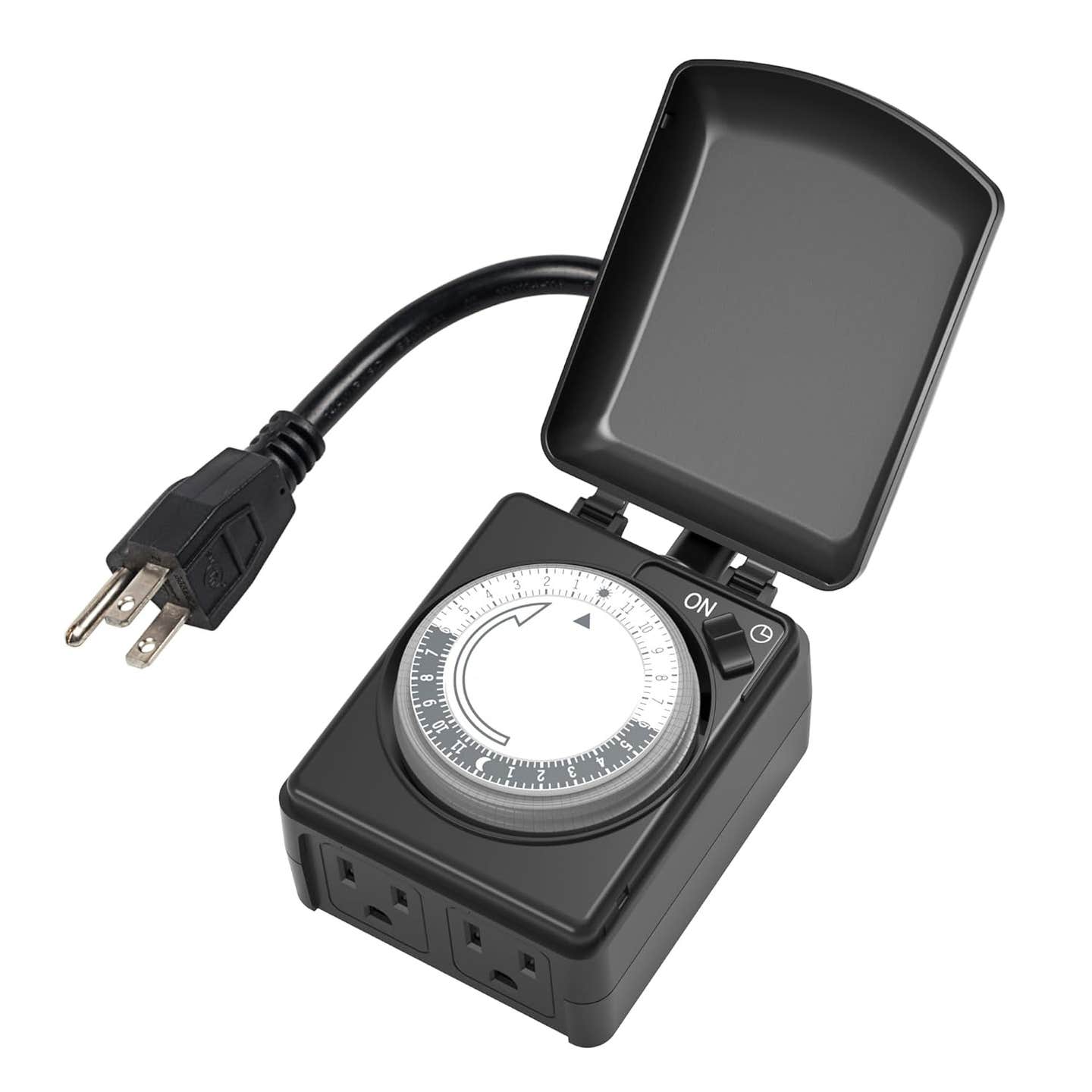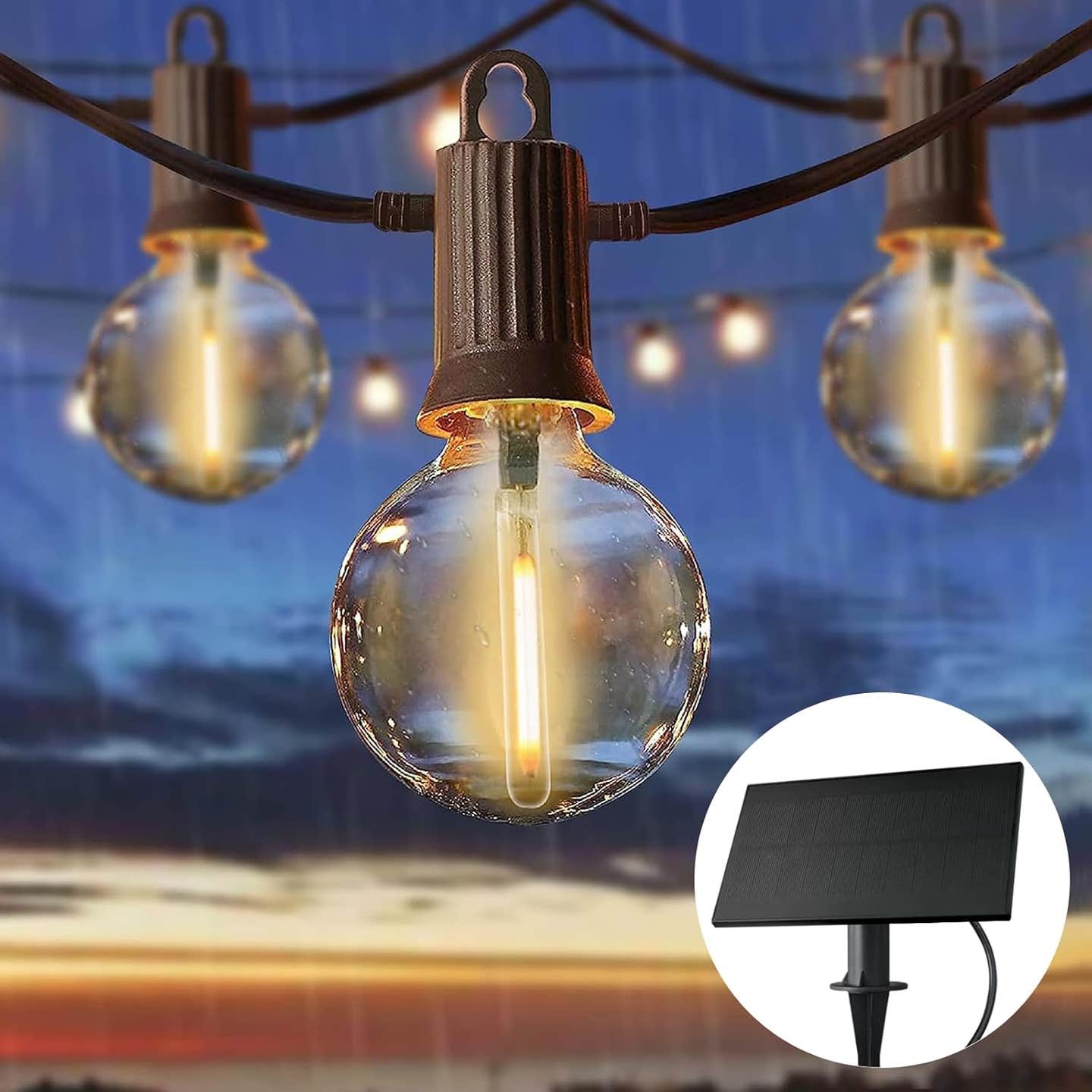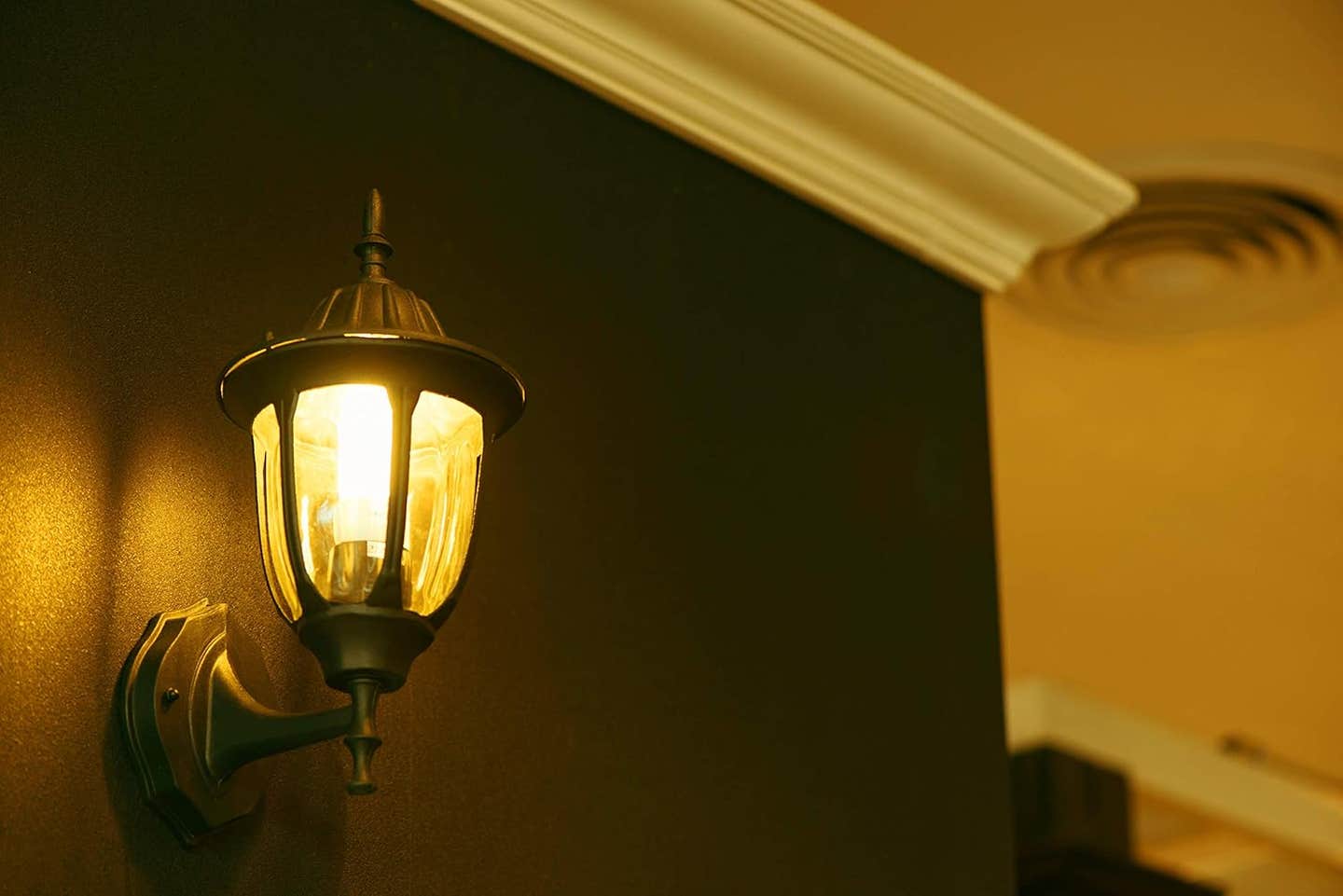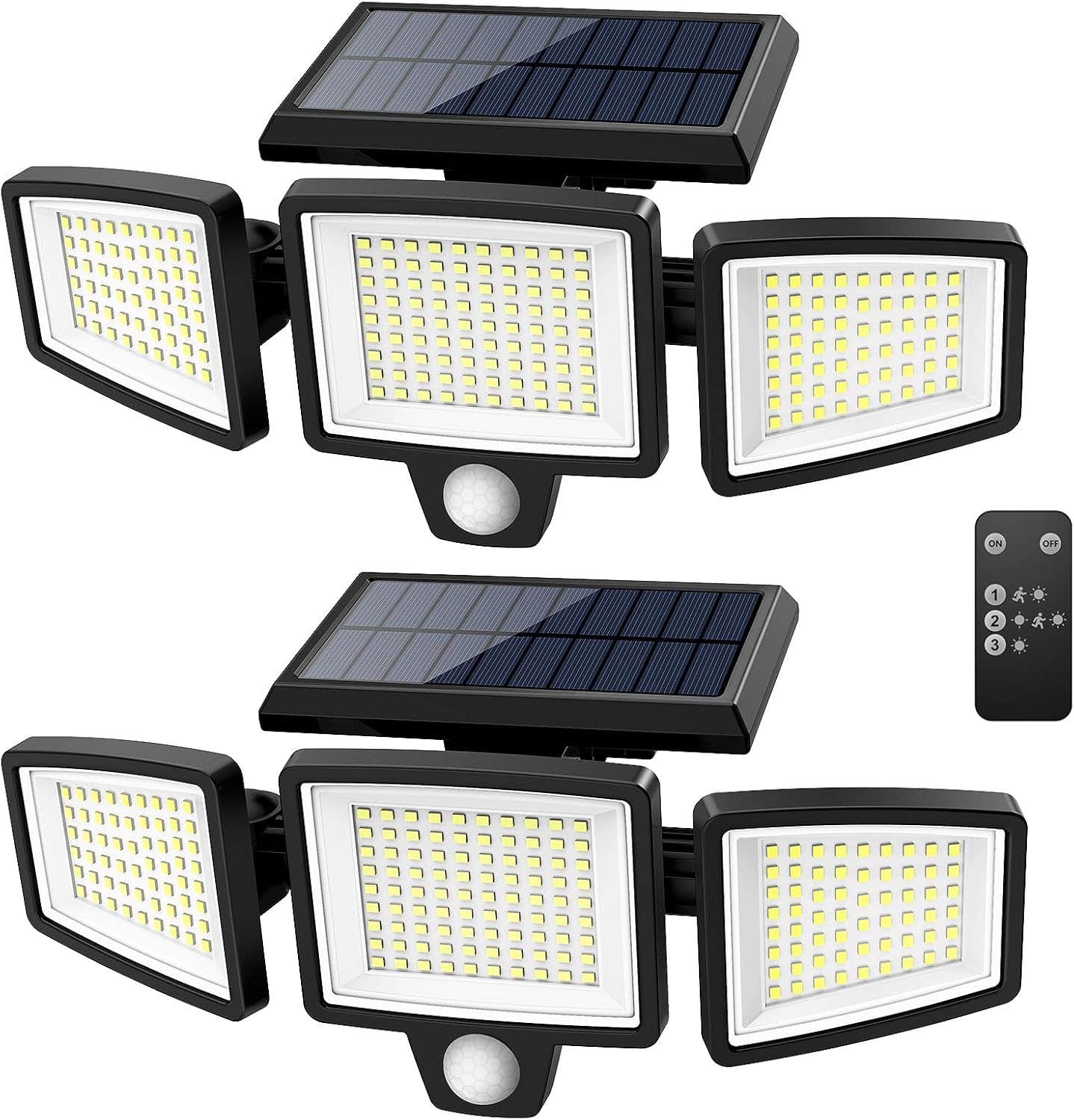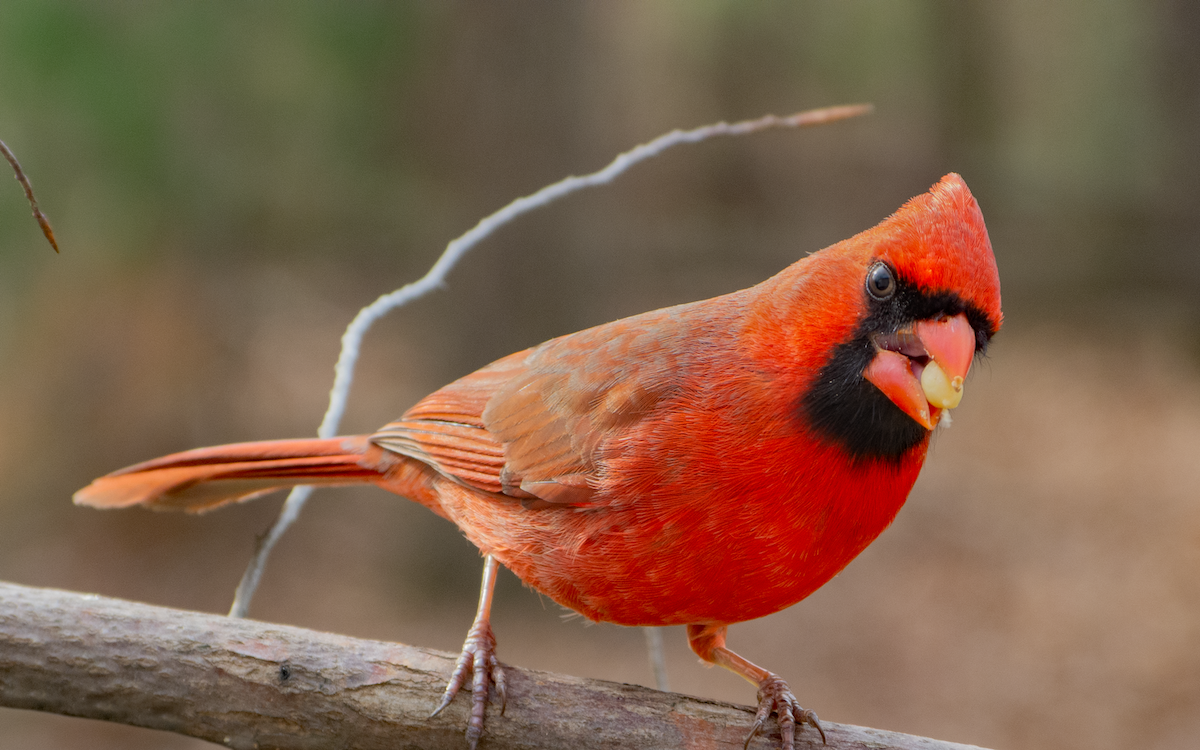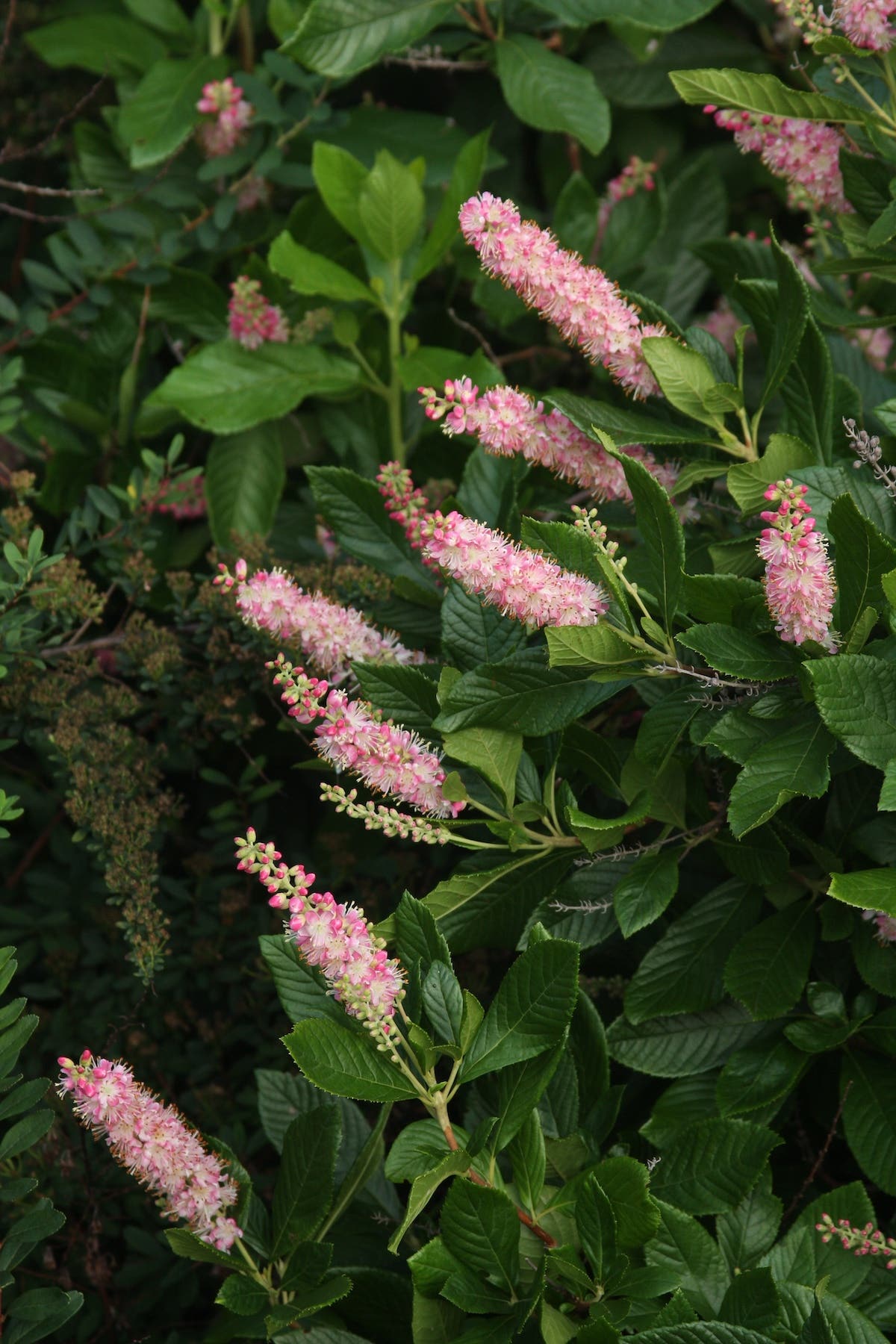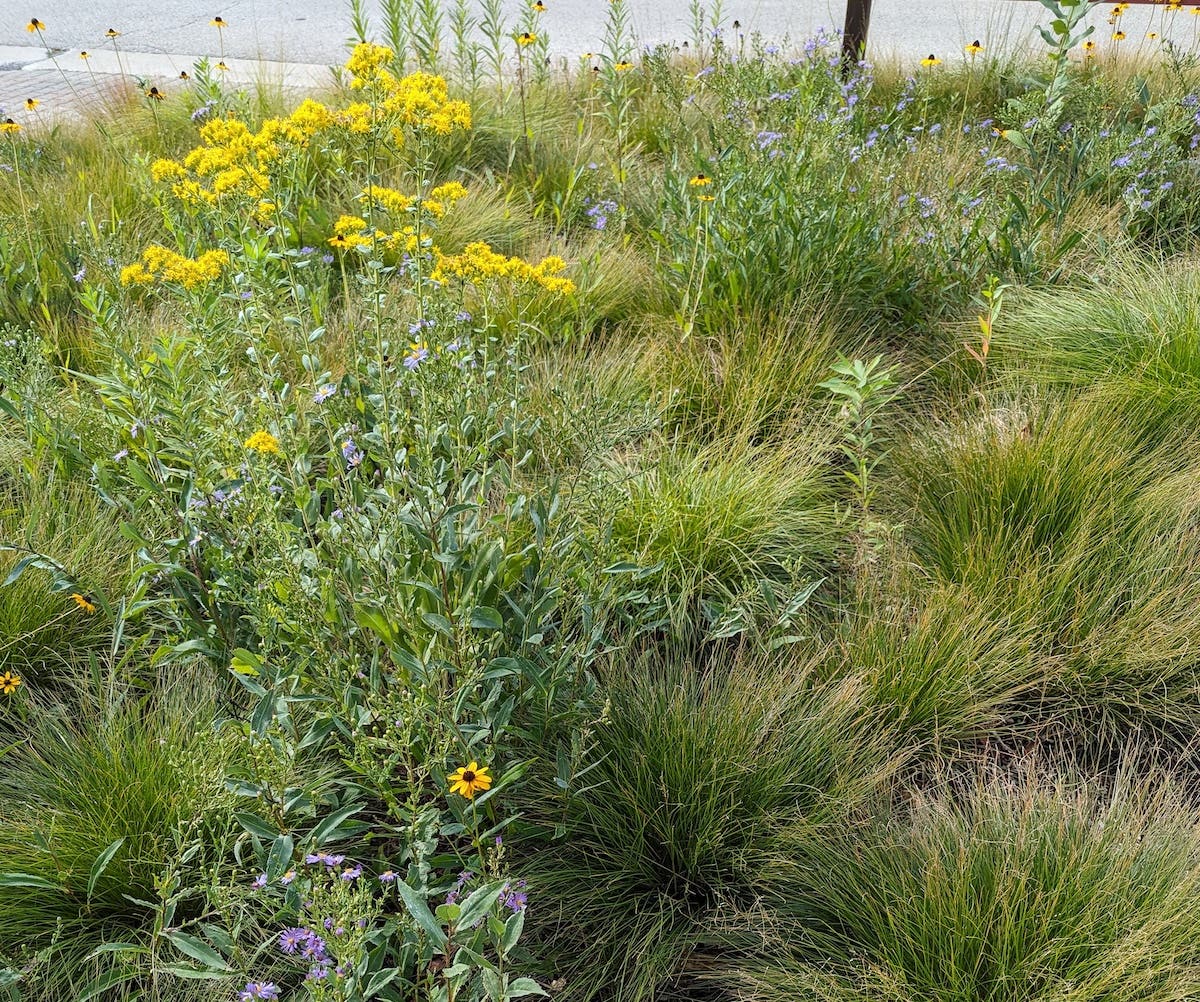Support Pollinators by Using Less Landscape Lighting
Too much landscape lighting can interfere with the health of pollinators and plants. Learn ways to avoid this in your garden.
Many gardeners today are trying to work with, not against, nature. We’re learning more about our garden’s effect on local ecosystems, and we’re choosing plants that support native bees, feed caterpillars of butterflies and moths and provide birds with food and habitat over the winter.
We know pollinators are decreasing worldwide because of habitat loss and pesticide use, and we are creating eco-friendly gardens to help combat that loss. But another factor has come to light—namely, artificial light itself. Too much of it is shining on our gardens at night.
Related:
Landscape lighting pros and cons
Landscape lighting has many practical purposes. It illuminates paths, stairs and entrances, reducing tripping hazards and helping to ensure the safety of family and guests. But it can also be hazardous to the environment.
DarkSky International—an organization that promotes the value of dark places for humans and wildlife—defines light pollution as the human-made alteration of the outdoor light levels that occur naturally. They explain further that when we over-light, fail to use timers and sensors or use the wrong color of light, we can negatively affect many parts of our world, including migratory birds, pollinators, sea turtles and mammals, including humans.
Anyone who has gardened knows that plants use light as an energy source and need periods of darkness to thrive. The natural 24-hour cycle of light and darkness and its seasonal variations are disrupted when plants are exposed to artificial light at night. This over-lighting can affect flowering, leaf bud, seed set and dispersal and possibly delay leaf fall, a plant’s natural process of preparing for colder temperatures.
An expert explains light stress
I spoke with Diane Turnshek from the Department of Physics and Astronomy at Carnegie Mellon University in Pittsburgh, Pa. She was the driving force behind Pittsburgh becoming the first city in the nation to create ordinances for city parks, facilities and streetlights to reduce unnecessary light pollution, a move many other cities are following.
In conversation with Ms. Turnshek, I learned that our overuse of outdoor lighting affects not only our ability to see the stars and planets—the original motivation behind her advocacy for dark skies—but also the circadian rhythms of nighttime pollinators. Moths, in particular, are irresistibly drawn to artificial light, which harms them by preventing them from mating and pollinating.
“Some nocturnal pollinators will stay away from lighted gardens because they become more easily hunted by predators,” she explained. “When nighttime pollinators aren’t pollinating due to light stress, daytime pollinators are also stressed because they can’t make up the deficit.”
In addition, she advises homeowners against uplighting trees because trees’ growth and behavior are affected by day length. In regions that experience cold winters, artificial light can be more influential than temperature on causing a tree to bud and bloom early, putting the flowers at risk of frost damage. (Related: "How to Protect Plants from Late Frosts in Spring.") In fall, artificial light can delay leaf dormancy, making trees more susceptible to cold injury.
Better ways to light the garden
When done well, outdoor lighting creates an inviting atmosphere while highlighting the attributes of your home and garden. In the interest of security, though, some homeowners have taken the “if a little is good, more must be better” approach.
But brighter does not mean safer, because it actually creates a glare that makes some spaces harder to see. Too much light creates dark shadows that can give criminals hiding places.
In addition, there is no clear scientific evidence that increased outdoor lighting deters crime. In fact, studies done by the home-security industry across several metropolitan areas show that most crimes occur between noon and seven p.m., not later at night. Nevertheless, lighting at night makes us feel safer, which is important.
Happily, there are ways to support pollinators without turning the landscape completely dark:
1. Install timers and set them to turn off your lights by 11:00 p.m.
This is especially important in the spring and fall, when nocturnally migrating birds, which depend on the moon and the stars to navigate, can become disoriented by light pollution. Artificial light causes them to go off course, exhausting their energy reserves. And year-round, birds need darkness to hide from predators and get a good night’s sleep.
2. Use motion-sensor lighting, which turns on only when movement is detected. This is the best way to have light when needed.
3. You can also choose Dark Sky–approved light fixtures and bulbs. Such fixtures are fully shielded, and they allow you to target the light so that it falls only where you need it.
4. When selecting light fixtures with integral lamps, or when changing existing fixtures with replacement bulbs, there are a few key things to pay attention to:
- The first is lumens. The brighter the bulb, the higher the lumen rating. Choose landscape lights at 50 to 300 lumens; path lights at 100 to 200 lumens; lamp posts at 120 to 180 lumens; and motion-sensor lights at 300 to 700 lumens.
- Next, consider the color temperature, measured in Kelvin (K). Basically, a lower Kelvin rating means the bulb gives more yellow/orange light, a warmer color temperature. A higher Kelvin rating indicates more blue light, which is cooler. Warmer light makes objects look more natural, while blue light scatters into the atmosphere, negatively impacting wildlife's biological clocks and plant growth. A good choice would be amber LED lighting at 2,200 K. Any light rated higher than 4,000 K is considered blue lighting.
More steps for supporting pollinators
Once your garden is under the cover of darkness, you might spend time outside observing the evening to discover what pollinating insects and animals actively forage for nectar in your ecosystem.
Nocturnal moths, flies and bees pollinate night-blooming flowers. Twilight-flying (crepuscular) bees find it advantageous to arrive right after the day-shift (diurnal) bees depart. Then they can forage without competition.
Moths are the largest group of night pollinators. They account for more than 90 percent of the Lepidoptera winged insects—butterflies make up just 10 percent. Moths pollinate like butterflies, drinking nectar with their long tongues. As they drink the carbohydrate-rich nectar, they pick up pollen dust and carry it from flower to flower.
As we’ve learned to do for day-flying butterflies like the monarch, we need to support moths through all their life-cycle stages, providing nectar plants to feed the adults and larval-host plants to feed the young. (Related: "Make a Butterfly Garden: Features That Attract Butterflies.") You can find host and nectar plants appropriate for your ecological region from the Xerces Society, the National Wildlife Federation and your state’s extension service.
Providing shelter and habitat is another factor in safeguarding pollinators. Moths need fallen leaves, stems and other plant debris for their eggs, pupae and larvae to hibernate and hide from predators. An overly manicured garden does not provide such refuge.
Please resist the urge to clean up every last leaf and bit of yard debris. If you want to remove these from your lawn and beds, the Xerces Society recommends creating a leaf pile and allow it to break down naturally. They warn against shredding leaves because you may be shredding eggs, caterpillars and chrysalis, too.
And, of course, using pesticides is counterproductive if you’re trying to establish a healthy environment for moths and more. Organic gardening is beneficial for all wildlife, especially pollinators. It will increase the beneficial insects that help to control pests. If you must treat a problem, choose OMRI-rated products and follow the directions carefully.
Night-blooming plants feed nighttime pollinators
Did you know there is an evening primrose (Oenothera) native to every region of the country? Thanks to Emily May, a Pollinator Conservation Specialist with the Xerces Society, now we all know.
These night-blooming, deer-resistant plants have flowers in shades of yellow, pink and white. They may be perennial, biennial or annual, depending on the species. Their fragrant flowers attract a variety of nocturnal pollinators, including crepuscular native bees, hawk moths and sphinx moths.
Like evening primroses, many night bloomers have pale or light-colored, fragrant, trumpet-shaped flowers. Some plants have a special partnership with a pollinator, such as the soapweed yucca (Yucca glauca) with the yucca moth (Tegeticicula). Indeed, several species of yucca share a mutually beneficial relationship with their pollinators. According to the US Forest Service, yuccas are growing well beyond their original geographic range, and the yucca moths have traveled with them. That is a great example of adaptation to a changing climate.
The night-blooming plants that attract moths and other pollinators can be the start of your very own Moon Garden, one specifically designed to be enjoyed after dark. It should feature primarily white or pale-colored flowers and silver foliage plants that reflect the light of the moon.
When planted adjacent to a seating area, you can enjoy the sight and scent of night-blooming plants and, hopefully, catch a glimpse of pollinators at work.


